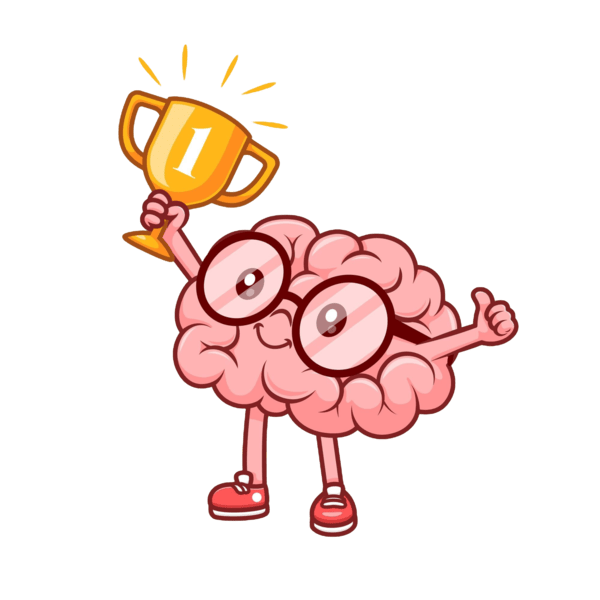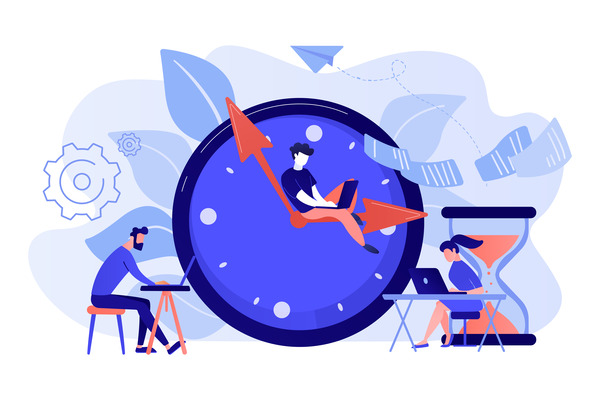CATEGORIES
#Careers #Education and Life Skills #Well-BeingOverview:
- Evidence-based methods to boost productivity.
- The role of focus, habits, and routines.
- Actionable tips for efficient time management
Are you struggling with time management? Are you unable to finish your work due to stress and anxiety? Is lack of focus hampering your productivity and efficiency? Do not worry, you are not alone. Research shows that 89% of India’s workforce spends its work-time inefficiently, causing delays and deterioration in their work and quality.
The good news, however, is that this problem, too, has a solution. And it is scientifically proven! The Science of Productivity is a scientific theory that helps you boost your work efficiency. This approach suggests modifying our work style and environment according to our neural functioning to improve focus and increase motivation. So, let us explore these scientific strategies that align with our brain’s natural rhythms to enhance productivity and well-being.

Optimizing Productivity: Designing the Workspace
The advent of digitalization has drastically changed the landscape of modern careers. Remote work means authority over your time, space, and method of work. But with great power comes a greater responsibility. Procrastination has become a pressing issue for today’s employees. Modern workers are struggling to maintain motivation and manage their time efficiently.
While the workspace has immensely transformed in the past two decades, our human brains have not. Working from home entails a constant battle between the mind and the body. The ambition to delegate and deliver is hindered by the inability to focus, which increases anxiety and leads to procrastination. This cycle hampers productivity.
By designing our workspaces to minimize distractions and increase drive, we can foster focus and reduce stress. Such small changes can lead to significant improvements in motivation and efficiency.
The human mind is hard-wired to scan its environment and build cognitive associations with the surrounding spaces. It is, therefore, crucial to dedicate a space exclusively for work and design it to increase proactiveness and enhance efficiency.
An ideal workspace should be in a private setting, away from visual distractions such as constant faces and movement. Having a wall or any other barrier between the table and the rest of the room can solve this problem.
Auditory distractions like background noise and intelligible speech also reduce productivity by at least 10% in the average worker. Protecting our sensory systems by using noise-cancelling headphones can help create a safe and comfortable space for the worker. Research shows that music with unintelligible speech (such as in an unknown language) can also help in increasing concentration.

Enhancing Focus: Restrictions, Movement, and Planning for Peak Performance
Research conducted by the American Psychological Association sampled 260 students to study productivity. The students were asked to study from their homes for 15 minutes. Upon its completion, the study discovered that the students’ concentration averaged down to 6 minutes before getting distracted. This low attention span was attributed to 3 main reasons– frequent distractions, lack of planning, and static working.
The Technology break
Can you guess what the biggest distraction was for these students? Unsurprisingly, it was their mobile phones! Larry Rosen, professor emeritus of psychology at California State University, Dominguez Hills, suggested a solution to this problem.
Called the “technology break,” Professor Rosen encouraged workers to establish a self-monitored period of 15 minutes of undistracted work. After 15 minutes of uninterrupted engagement, workers may take a short break to check messages and emails before resuming work.
Planning for productivity
The second most pressing hindrance to focus is inefficient planning before commencing work. A cluttered mind is never productive, nor is it efficient. It is essential to know your goals before starting work for efficient time management and absolute target fulfilment.
Reflective goal-related writing, or in simple words journaling, can be a great solution to the confusion of workload stress. This not only helps the worker visualize their work time and method but also creates accountability and develops self-efficiency.
Ditching The Chair
Let’s be honest: being glued to the work desk for hours is neither comfortable nor enjoyable. Staying stagnant for long periods also causes several health problems, such as fatigue, migraines, or even spondylosis!
Taking an occasional walk, inside or outside, is not just recreative but also rejuvenating. Medical science claims that being up for long durations increases blood circulation to the mind and body. Movement, therefore, also helps the brain become more active, engaged, and prepared to resume work.
Actionable Tips– The Pomodoro Technique and Other Methods
Besides designing a conducive workspace and minimizing distractions, psychologists have developed tried and tested methods to boost productivity. Such techniques offer structured approaches to managing time effectively, enhancing focus, and reducing burnout. Grounded in psychological principles and methods, these actionable strategies help keep employees on track and work more efficiently.

The PomodoroⓇ Technique
Time may not always be our best friend, or deadlines our best motivator. But worry not! The Pomodoro technique is designed to help procrastinators improve their relationship with time and productivity.
Developed by businessman Francesco Cirillo, this technique helps us understand our brain’s work style and use it to its best advantage.
The technique is not just simple but also validates our anxieties, frustrations, and demands as workers. The technique views time as a “predator” and enables us to build a healthy relationship with it. This is how the technique works:
-Select a task and write it on a sheet of paper
-Set the PomodoroⓇ timer to 25 minutes
-Work on the task till the alarm goes off
-Put a checkmark on your sheet indicating period completion
-Take a 5-minute break
-Increase the break by every 4 PomodorosⓇ
This technique trains the brain to focus at a stretch and rewards it every time the process is repeated. The PomodoroⓇ Technique can be used on a daily and weekly basis for efficient team management and productivity-enhancing activities.
Time Blocking
Designed to enhance productivity, Time Blocking is another efficiency hack to get more work done while maintaining a healthy work-life balance. The idea is to schedule the day by blocking every hour for specific tasks and responsibilities.
Unlike writing an open-ended to-do list, the Time Blocking technique makes you prioritize tasks. Having a blueprint for the day allows the accomplishment of major as well as minor goals. It also creates space for some me-time to revive and rejuvenate.
Here are some time-blocking templates that you can use to structure your day, prioritize tasks, and stay focused on what matters most.
Tech for Time
While we all use technology to work, did you know that digital tools can also effectively manage your time? Applications such as digital calendars, task managers, and AI can streamline scheduling your work day; on your work device itself!
Conclusion
Time is precious, and so is our mental well-being. Stressing unnecessarily about task completion is not just unhealthy but also unproductive and unnecessary. By leveraging tried and tested methods such as workspace customization, efficiency-boosting practices, and time management hacks, we can work smarter without adding any pressure. Life is all about finding balance, and small tweaks can make big differences. So, use these techniques to improve your work life, and let us know which technique worked the best for you!


